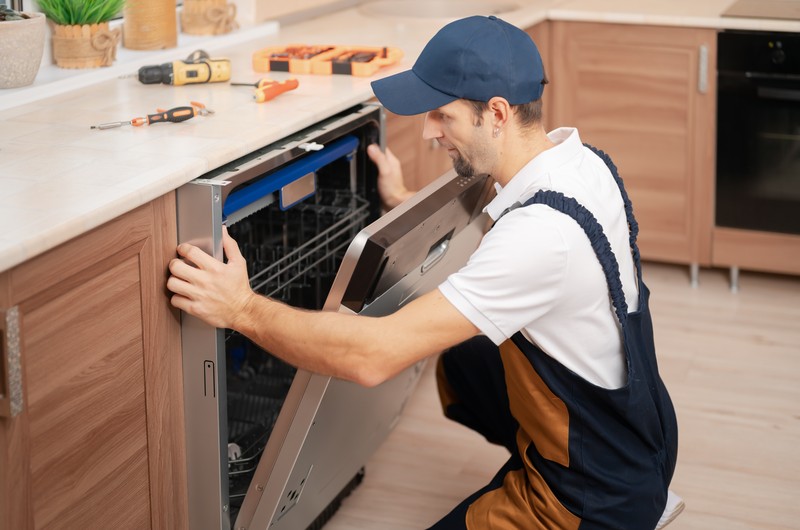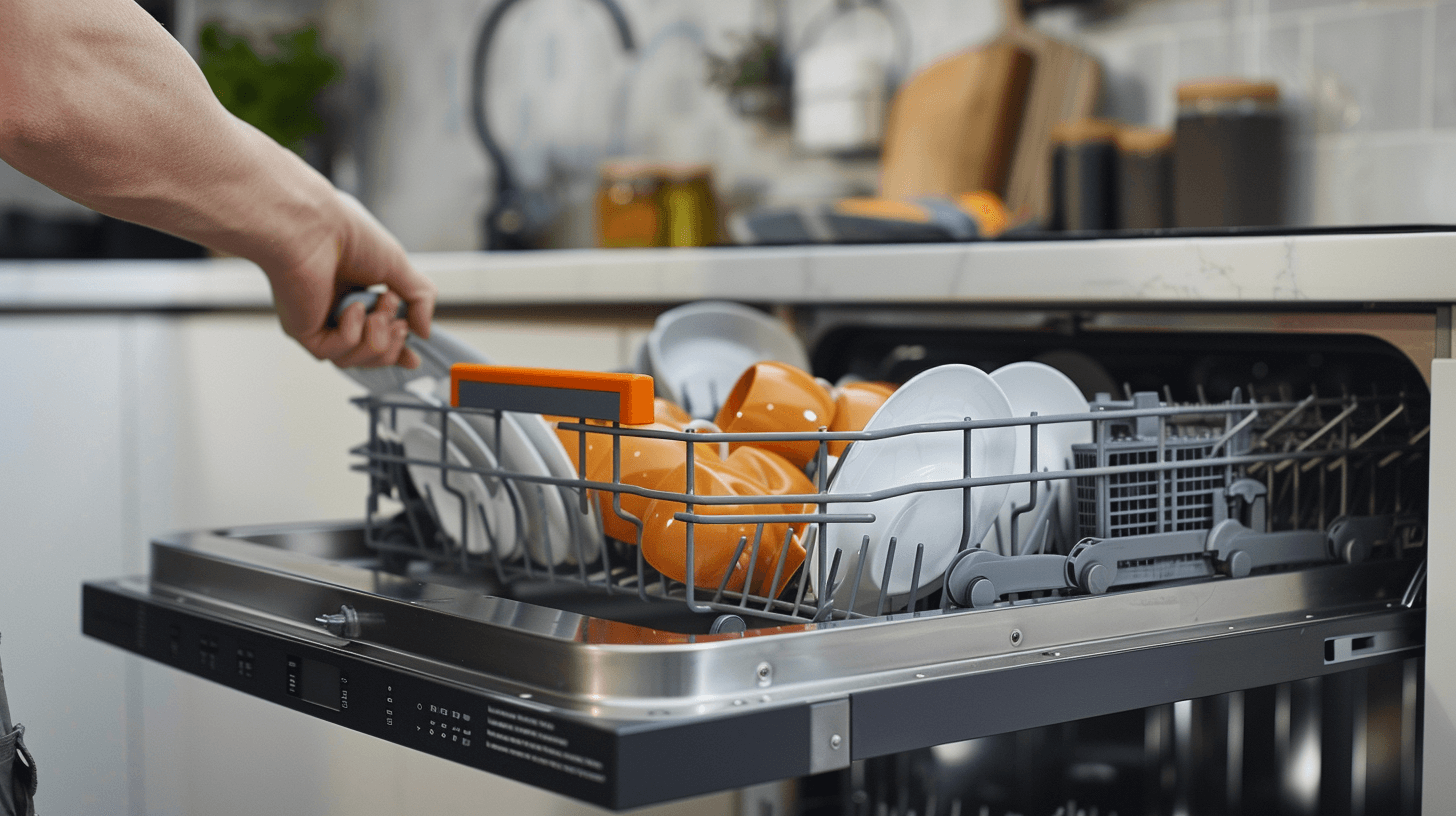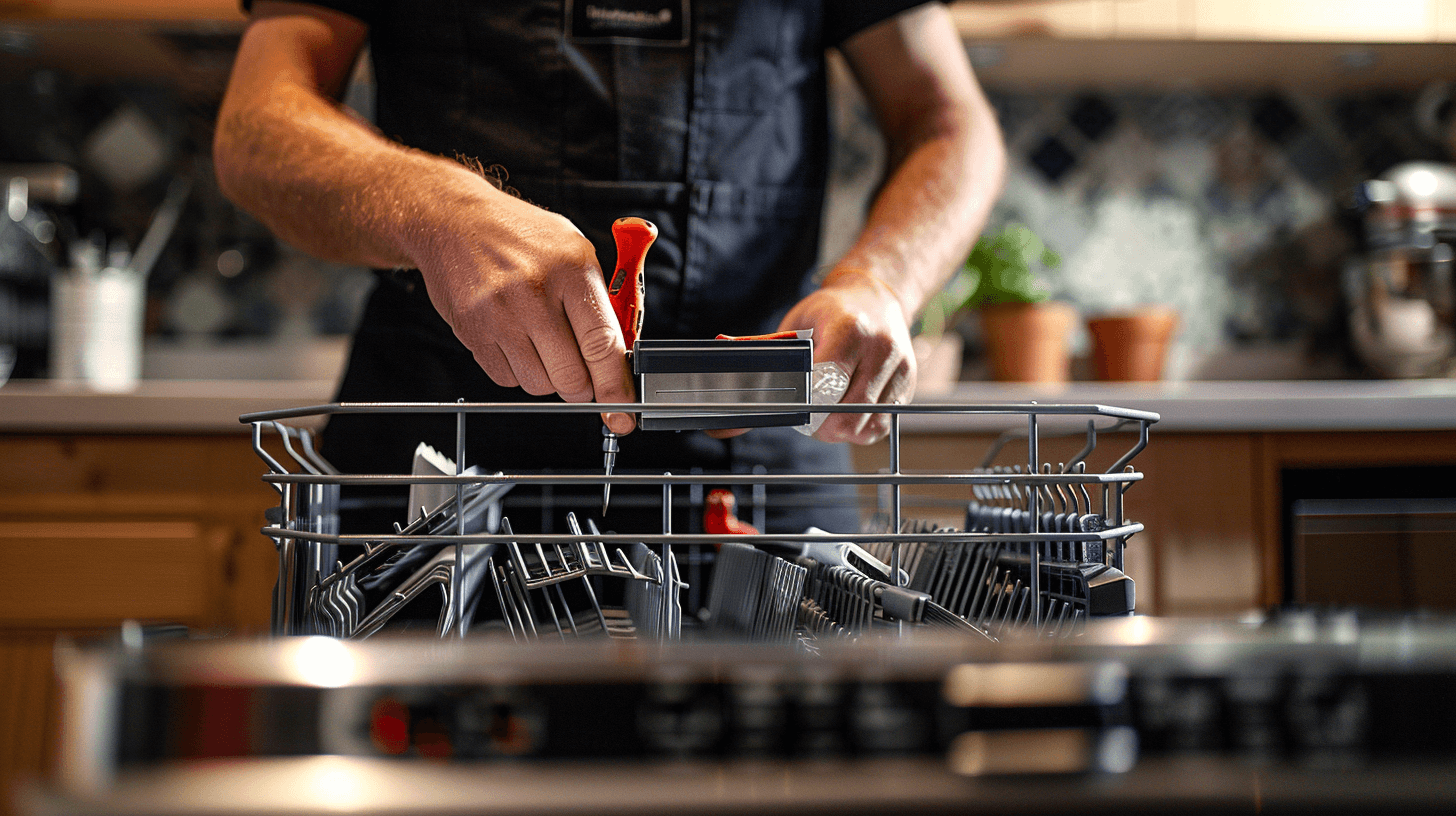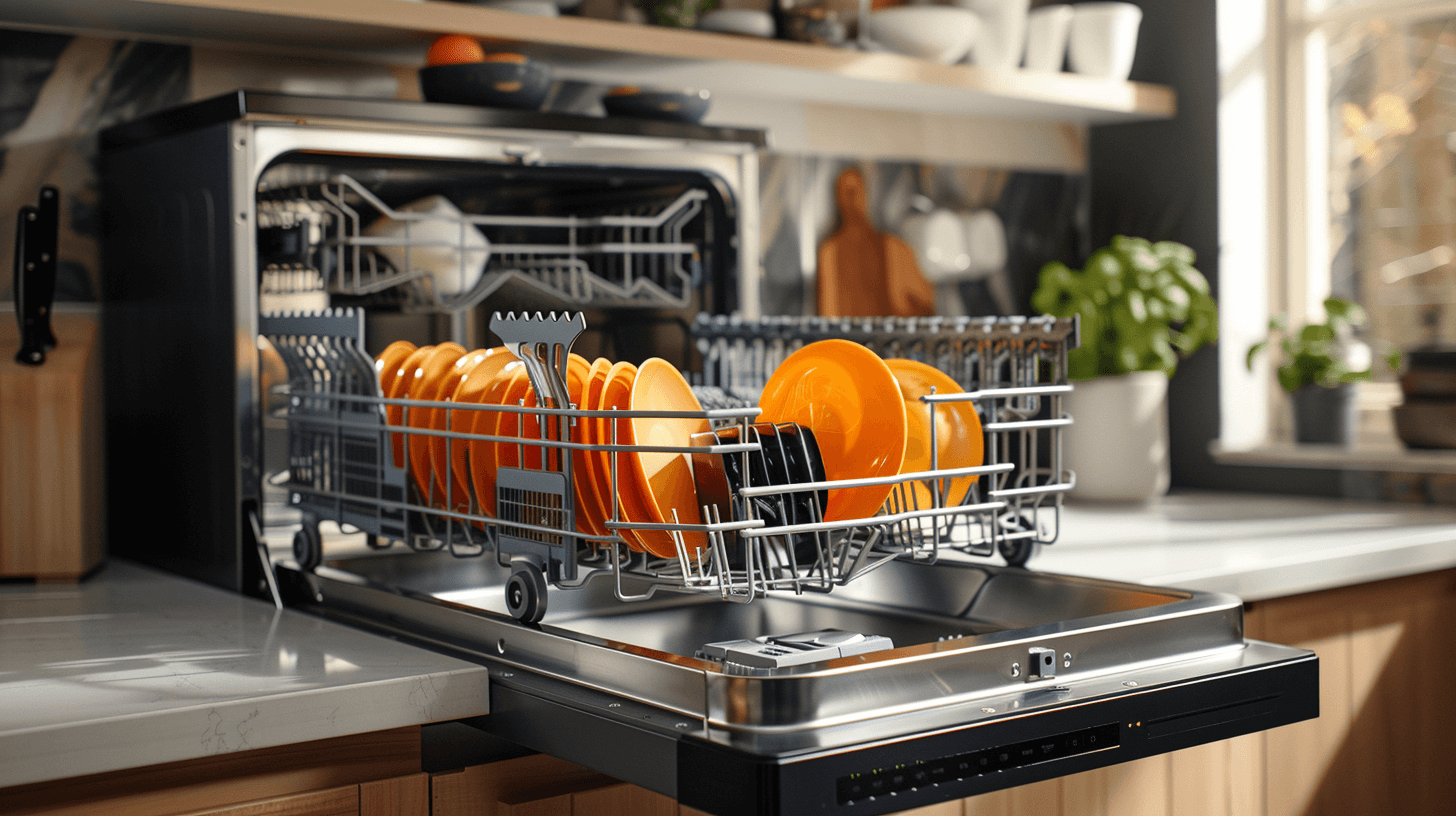 What are the Most Common Dishwasher Installation Issues
What are the Most Common Dishwasher Installation Issues

Identifying Dishwasher Installation Errors
When installing a dishwasher, precision is paramount. Common mistakes often stem from incorrect measurements, leading to a host of issues, from improper fitting to compromised functionality. Ensuring that the dimensions of the dishwasher align with the designated space is not just a matter of aesthetics but a necessity for the appliance’s operation.
The Crucial Role of Accurate Measurements
Accurate measurements are the foundation of a successful dishwasher installation. They dictate the compatibility of the appliance with the existing cabinetry and plumbing, preventing issues such as door interference or inadequate space for ventilation.
Consequences of Improper Drain Tubing Setup
Improper drain tubing can result in water backflow and potential damage to the dishwasher’s internal components. It’s essential to adhere to the manufacturer’s guidelines for drain tubing installation to avoid such long-term complications.
High Loop Installation Significance
The high loop is a critical element in preventing contaminated water from syphoning back into the dishwasher. By creating a loop in the drain hose that is higher than the level of the sink, you ensure a barrier against backflow, safeguarding both the dishwasher and the cleanliness of your dishes.
Professional Installation: Mitigating Risks and Ensuring Quality

Professional installation services play a pivotal role in the successful setup of your dishwasher. By choosing experts, you’re not only mitigating the risks associated with do-it-yourself errors but also ensuring that your appliance operates at peak efficiency.
Mitigation of DIY Installation Risks
When you opt for professional installation, you’re entrusting your appliance to individuals with the expertise to avoid common pitfalls. Professionals are adept at circumventing issues such as incorrect measurements, improper drain tubing, and the misuse of hardware, which can lead to significant long-term problems if not addressed correctly.
Prevention of Potential Damages
A professional’s touch can prevent potential damages that might arise from a flawed installation. This includes water damage from leaks, electrical issues from improper wiring, and structural damage from incorrectly secured units. Their experience ensures that every component, from the water inlet valve to the drain hose, is installed with precision.
Compliance with Installation Standards
Professionals ensure compliance with all relevant installation standards, including plumbing codes and electrical safety regulations. Their knowledge of the latest industry standards guarantees that your dishwasher is not only installed correctly but also meets all safety requirements.
Reliable Services by “All Service 4U”
“All Service 4U” provides reliable installation services, ensuring that your dishwasher is installed with meticulous attention to detail. Their team of skilled professionals is equipped to handle the complexities of installation, offering peace of mind that your appliance is set up for optimal performance.
Drainage Complications in Dishwasher Installation

Understanding the intricacies of dishwasher drainage is crucial for maintaining the longevity and functionality of your appliance. Drainage issues, if not addressed, can lead to water damage and appliance malfunction.
Common Drainage Issues and Their Indicators
New dishwashers can experience a range of drainage problems, often indicated by water remaining at the bottom of the appliance post-cycle or by an unpleasant odour emanating from the unit. These issues are typically due to clogs in the drain hose, improper installation of the air gap, or blockages in the garbage disposal connected to the same drain.
The Impact of Maintenance Neglect
Regular maintenance is vital for preventing drainage complications. Neglect can result in accumulated food debris and grease, leading to clogs and inefficiency. It’s essential to routinely clean philtres and check for kinks or obstructions in the drain hose to ensure smooth operation.
Best Practices for Dishwasher Drainage Setup
To avoid common drainage issues, ensure that the drain hose is installed with a high loop or air gap to prevent backflow. Additionally, confirm that the hose is not compressed or kinked, which could impede water flow.
Specialised Assistance from “All Service 4U”
For complex drainage issues that surpass routine maintenance, “All Service 4U” offers expert assistance. Their professionals can diagnose and resolve intricate problems, ensuring your dishwasher’s drainage system functions optimally.
Addressing Common Sources of Dishwasher Clogs

Clogs are a frequent concern that can impede your dishwasher’s performance. Understanding the common culprits behind these blockages is essential for maintaining a functional appliance.
Frequent Causes of Dishwasher Clogs
The most prevalent sources of clogs include:
- Food Debris: Large particles left on dishes can accumulate and obstruct the dishwasher’s philtre or drain hose.
- Detergent Misuse: Excessive or the wrong type of detergent can lead to soap buildup, contributing to clogs.
- Dirty Philtres: Neglected philtres trap debris, which can restrict water flow over time.
- Pump Complications: Objects obstructing the pump can prevent it from effectively moving water out of the unit.
Preventing Clogs from Food Debris
To prevent food-related clogs:
- Scrape dishes thoroughly before loading them into the dishwasher.
- Regularly inspect and clean the appliance’s philtre according to the manufacturer’s instructions.
The Role of Detergent in Clogs
To avoid detergent-related clogs:
- Use the recommended type and amount of detergent for your specific dishwasher model.
- Regularly run the dishwasher on a cleaning cycle, if available, to clear out any residue.
Clearing a Clogged Dishwasher
If you encounter a clog:
- Safety First: Disconnect power to the dishwasher.
- Inspect and Clean: Check and clean the philtre, drain hose, and garbage disposal connection.
- Check the Pump: Inspect the pump for obstructions and carefully remove any debris.
- Test: Reconnect power and run a short cycle to test functionality.
For persistent issues, consider contacting a professional to ensure your dishwasher returns to optimal operation without risking further complications.
Troubleshooting Noise and Leak Problems in Dishwashers

Identifying and resolving noise and leak issues in dishwashers is essential for maintaining a quiet and clean kitchen environment.
Common Causes of Dishwasher Noise
Dishwasher noise often stems from:
- Faulty Seals: Worn or damaged door seals can cause a rattling noise as water forces its way through gaps.
- Bearing Rings: Defective bearing rings in the spray arms can lead to a grinding sound during operation.
- Misaligned Spray Arms: If spray arms are not properly aligned, they can hit against the racks or dishes, creating noise.
Detecting and Addressing Leaks
Leaks in a dishwasher setup can be identified by:
- Puddles: Water accumulating under or around the dishwasher.
- Dampness: Excessive moisture or signs of corrosion at the base of the unit.
To fix leaks:
- Inspect Door Seals: Check for cracks or wear in the door seals and replace if necessary.
- Examine Gaskets: Look for damage to the gaskets around the pump and replace them if they are compromised.
- Check Hoses: Ensure that all hoses are securely connected and free from damage.
The Role of Door Alignment in Leak Prevention
Proper door alignment is critical to prevent leaks. Misalignment can cause an imperfect seal, allowing water to escape. To adjust door alignment:
- Loosen Hinges: Slightly loosen the screws on the door hinges.
- Reposition Door: Adjust the door to the correct alignment.
- Tighten Screws: Secure the hinges back in place, ensuring the door is evenly aligned and closes tightly.
Ensuring Clean Dishes After Every Cycle

Maintenance of Dishwasher Components
To prevent food remnants on dishes after a wash cycle, regular maintenance of the dishwasher’s key components is essential. This includes:
- Screens: Check and clean the bottom screen regularly to prevent food particles from recirculating.
- Gaskets: Inspect door gaskets for food buildup and clean them to maintain a proper seal.
- Spray Arms: Ensure spray arms are free from debris to allow for unobstructed water flow.
Indicators of a Well-Functioning Dishwasher
A dishwasher operating efficiently typically exhibits:
- Consistent Cleaning Results: Dishes come out clean after every cycle without residue.
- No Water Spots: Glassware and cutlery are free from water spots, indicating effective rinsing.
- Quiet Operation: Minimal noise during cycles suggests that all moving parts are functioning correctly.
The Impact of Regular Maintenance
Routine maintenance can significantly enhance dishwasher performance:
- Extended Appliance Life: Regularly cleaning and inspecting components can prevent wear and extend the lifespan of the dishwasher.
- Improved Efficiency: Clean philtres and unclogged arms allow the dishwasher to operate more efficiently, saving energy and water.
- Prevention of Odours: Removing trapped food particles helps prevent unpleasant odours from developing inside the appliance.
Diagnosing and Fixing Drying Malfunctions

The Role of Heating Elements and Thermostats
The drying process in dishwashers relies heavily on the proper functioning of heating elements and thermostats. These components work together to raise the temperature inside the dishwasher, facilitating the evaporation of moisture from dishes.
- Heating Elements: Generate the heat necessary for effective drying.
- Thermostats: Regulate the temperature to prevent overheating and ensure energy efficiency.
Tools Required for Diagnosing Drying Issues
To diagnose issues with the drying function, you will need:
- Multimeter: To test the electrical continuity of heating elements and thermostats.
- Screwdrivers: For disassembling panels to access internal components.
- Owner’s Manual: To understand the specific diagnostic procedures for your dishwasher model.
Testing and Replacing Faulty Components
To test and replace faulty components:
- Disconnect Power: Ensure the dishwasher is unplugged or the circuit breaker is off.
- Access Components: Remove the necessary panels to reach the heating element and thermostat.
- Conduct Tests: Use a multimeter to check for continuity; a lack thereof indicates a need for replacement.
- Replace if Necessary: Follow the manufacturer’s instructions to replace non-functioning parts.
Signs of Compromised Drying Function
Be aware of the following indicators that suggest a compromised drying function:
- Damp Dishes: Dishes remain wet even after the completion of the drying cycle.
- Cool Interior: The dishwasher interior does not feel warm to the touch post-cycle.
- Error Codes: Some dishwashers display error codes signalling issues with the drying system.
Essential Tools for Dishwasher Installation

Proper installation of a dishwasher requires a set of specific tools and accessories to ensure a secure and efficient setup.
Tools and Accessories for Installation
The essential tools for a successful dishwasher installation include:
- Adjustable Wrench: For tightening connections and fittings.
- Level: To ensure the dishwasher is perfectly horizontal for optimal operation.
- Tape Measure: For precise measurements of the installation space.
- Drill: For securing the dishwasher to cabinetry or walls.
- Screwdrivers: Both flathead and Phillips head for various screws during installation.
Importance of Water Inlet Valves and Teflon Tape
Water inlet valves and Teflon tape are critical for a leak-free installation:
- Water Inlet Valves: Control the flow of water into the dishwasher. A properly fitted valve prevents leaks and water damage.
- Teflon Tape: Wrapped around threading on pipes and fittings, Teflon tape provides an additional seal to prevent leaks.
Role of GFCI Outlets and Electrical Junction Boxes in Safety
GFCI outlets and electrical junction boxes are vital for electrical safety:
- GFCI Outlets: Protect against electrical shock by shutting off power if a fault is detected.
- Electrical Junction Boxes: Enclose wire connections to prevent short circuits and electrical fires.
“All Service 4U” and Installation Support
“All Service 4U” can provide the necessary tools and expertise for installation, ensuring that your dishwasher is installed with the utmost attention to safety and functionality. Their professionals are equipped to handle the technical aspects of installation, from electrical connections to plumbing requirements.
Regular Maintenance to Prevent Dishwasher Issues

Maintaining your dishwasher is key to preventing common problems and ensuring it operates efficiently for years to come.
Routine Maintenance Checks
To avoid issues, incorporate the following maintenance routines:
- Philtre Cleaning: Regularly remove and rinse the dishwasher philtre under running water to prevent clogs and maintain water flow.
- Hose Inspection: Check hoses for kinks or leaks monthly and replace if signs of wear or damage are evident.
Frequency of Maintenance
For optimal performance, perform these maintenance tasks:
- Philtre: Clean the philtre after every few cycles or when visible debris is present.
- Hoses and Seals: Inspect hoses and rubber seals every six months to ensure they are secure and intact.
Long-Term Benefits of Proper Maintenance
Consistent maintenance of your dishwasher offers several long-term benefits:
- Efficiency: A clean and well-maintained dishwasher uses less water and energy.
- Performance: Regular upkeep helps maintain the dishwasher’s cleaning effectiveness.
- Lifespan: Preventative maintenance can extend the life of your appliance, saving you money on potential repairs or early replacement.
Support from “All Service 4U”
“All Service 4U” can assist in establishing a maintenance schedule tailored to your dishwasher’s model and usage. Their expertise ensures that all aspects of your dishwasher are cared for, preventing common installation issues from arising.
Incorporating Smart Technology in Dishwasher Installation

Smart technology in dishwashers offers enhanced functionality and convenience, but it also requires additional steps during installation to ensure proper connectivity.
Steps for Installing Wi-Fi-Connected Dishwashers
When installing a Wi-Fi-connected dishwasher:
- Wi-Fi Configuration: Connect the dishwasher to your home’s Wi-Fi network following the manufacturer’s instructions.
- App Installation: Download the corresponding mobile application to manage and monitor the dishwasher remotely.
- Account Setup: Create an account within the app to access full features, such as cycle customization and start times.
Enhancements from Smart Technology
Smart dishwashers provide:
- Remote Access: Control and monitor your dishwasher from anywhere using your smartphone.
- Customization: Adjust washing cycles and settings through the app for personalised cleaning.
- Notifications: Receive alerts for cycle completion or maintenance needs.
Connectivity Considerations
For optimal smart dishwasher functionality:
- Stable Wi-Fi Network: Ensure a strong and stable Wi-Fi signal in the area where the dishwasher is installed.
- Compatibility: Verify that your mobile device is compatible with the dishwasher’s app.
Impact on Troubleshooting
Smart technology simplifies troubleshooting by:
- Error Reporting: Immediate notifications of issues and error codes through the app.
- Guided Assistance: Step-by-step troubleshooting guides available within the app.
- Customer Support: Direct access to customer support and service scheduling through the application.
Addressing Hard Water and Water Pressure Concerns

Effects of Hard Water on Dishwashers
Hard water can significantly impact both the installation and function of your dishwasher. It contains high levels of minerals like calcium and magnesium, which can:
- Lead to limescale buildup, affecting the efficiency of the dishwasher’s heating element and pump.
- Cause spots and film on dishes after washing, due to mineral deposits left behind.
- Clog the water jets and philtres, reducing the overall cleaning performance.
Water Softening Solutions for Dishwashers
To combat the effects of hard water, consider integrating a water softener into your dishwasher setup. This can:
- Extend the lifespan of your dishwasher by preventing mineral buildup.
- Improve cleaning results by reducing spots and film on dishes.
- Enhance efficiency by maintaining clear water jets and philtres.
The Importance of Water Pressure
Proper water pressure is crucial for the dishwasher’s performance. It ensures:
- Adequate water flow through the spray arms for effective cleaning.
- Efficient filling and draining of the dishwasher, which is vital for the wash and rinse cycles.
Integration of Anti-Flood Devices
Anti-flood devices are essential for leak prevention in dishwashers. These devices can:
- Detect leaks early and shut off the water supply to prevent water damage.
- Provide peace of mind by adding an extra layer of protection against potential flooding.
Incorporating these measures will help maintain your dishwasher’s performance and prevent common issues associated with hard water and water pressure.
Key Takeaways for Dishwasher Installation

When considering dishwasher installation, property and business owners should prioritise accuracy and professionalism to ensure the longevity and efficiency of their appliance.
Ensuring Longevity and Efficiency
To maximise the lifespan and performance of your dishwasher:
- Adhere to Specifications: Follow the manufacturer’s installation guidelines to the letter, including measurements and component placements.
- Regular Maintenance: Establish a routine cleaning schedule for philtres and check for hose integrity to prevent common issues like clogs and leaks.
The Benefits of Choosing “All Service 4U”
Selecting a reputable service such as “All Service 4U” for your installation and maintenance needs offers several advantages:
- Expertise: Leverage the knowledge of skilled professionals to avoid common installation errors.
- Quality Assurance: Benefit from the assurance of quality workmanship and potential warranties on the service provided.
- Peace of Mind: Gain confidence in the knowledge that your dishwasher is installed correctly, reducing the risk of future problems.
Contacting “All Service 4U” for Assistance
For expert installation or maintenance services, “All Service 4U” is readily available to assist. You can reach out to them through:
- Phone: Contact their customer service line for immediate assistance.
- Online: Visit their website to schedule an appointment or chat with a representative.
- In-Person: Drop by their local office to discuss your needs with a professional directly.
By taking these steps, you can ensure that your dishwasher installation is handled professionally, providing optimal functionality and efficiency.

